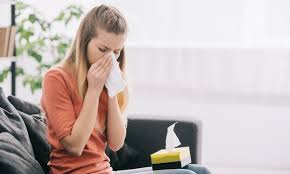Spring is mold season!

Mold is a type of fungus that can be found almost anywhere, both indoors and out. A mold allergy can develop if mold spores become airborne. When you inhale microscopic mold spores in the air, your body treats them as foreign invaders and produces antibodies against them.
Although most molds are not harmful, they can cause serious health problems for some people, especially those who have asthma. Mold allergies may vary depending on the type of mold exposure and can occur seasonally or all year long.
Outdoors, mold is most prevalent in the fall and spring due to warm temperatures and high humidity. It can also grow year-round in damp, dark, and warm areas in your home or office.
To help reduce the likliehood of mold growth read these tips:
-
Be sure to fix any leaks in your roof, walls, and plumbing to prevent mold from growing.
-
Install a HEPA (High-Efficiency Particulate Air) filter in your central air conditioning unit. This will help trap spores before they get to you.
-
Dispose of any moldy carpet or drywall.
-
Use household bleach or a baking soda, vinegar, and water solution to clean visible mold and mildew on non-porous surfaces.
-
Use a dehumidifier. It helps prevent mold regrowth. You should reduce the amount of moisture in any area of your home that smells musty or damp. Mold can’t grow in homes with humidity levels below 50%.
-
Clean garbage containers and refrigerator drip pans regularly.
-
If you’re taking a bath or a shower, use an exhaust fan or open a window for ventilation
-
Keep the laundry room well ventilated.
-
Dry carpet immediately if it becomes wet from a leak or spill.
-
Remove any papers, books, clothing, or bedding that may harbor mold spores.
-
Use mold inhibitors before painting walls and cabinets.
-
Repair roof leaks and gutters as soon as possible. It is important to clean gutters to remove leaves and debris that could clog them, resulting in leaks.
-
Avoid installing carpet in the attic, basement, and bathroom.
